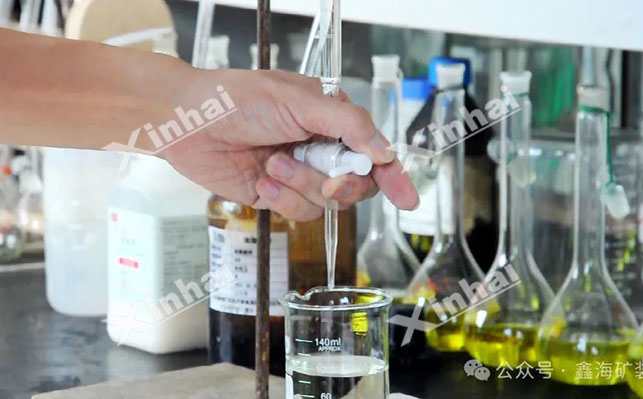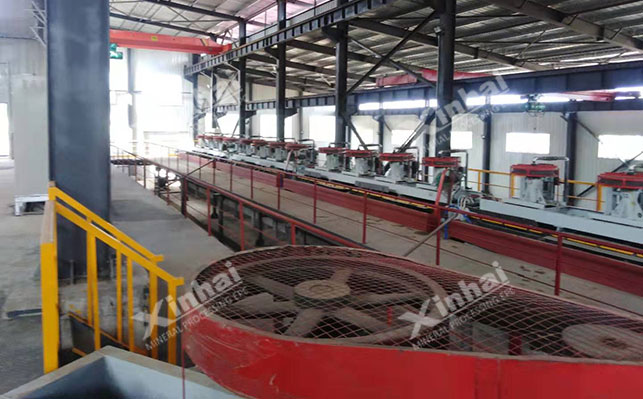If you want to know more information (such as product/process price, etc.), please contact us 24-hour telephone
The efficient separation of spodumene and feldspar has long posed a technical challenge for the mineral processing industry. As symbiotic minerals with similar crystal structures (both silicates) and comparable physicochemical properties, their separation efficiency directly impacts lithium resource utilization rates and project economics. This article systematically reviews current mainstream separation technologies and their innovative applications to provide scientific guidance for industrial selection.
As the most mature industrial separation method, flotation achieves targeted modulation of mineral surface properties through multidimensional technological synergies:
1.1 Composite Collector Synergy
Cationic-anionic dual-layer systems: A 1:3 ratio of dodecylamine and sodium oleate increases spodumene's contact angle to 78°.
Chelating collector innovation: Novel hydroxamic acid collectors (e.g., H205) selectively adsorb onto spodumene's Al-O sites at pH=8.5, achieving 92.3% flotation recovery.
Functionalized modified reagents: Nano-emulsified fatty acid collectors improve pulp dispersion by 40% and reduce reagent consumption by 25%.

1.2 Precise Medium Regulation
pH gradient control: A sodium carbonate-sodium hydroxide buffer (pH=6.5–7.5) induces differential dissociation of Al³+ (feldspar) and Li+ (spodumene).
Advanced depressants: Modified lignosulfonate (LS-8) improves feldspar depression efficiency by 18% compared to traditional sodium hexametaphosphate.
1.3 Process Innovation
Stage grinding-asynchronous flotation: When the -0.074 mm fraction exceeds 85%, a "roughing tailing discard (35% yield) + three-scavenger closed-circuit cleaning" is applied.
Carrier flotation enhancement: Adding -10 μm fine spodumene (10–15% loading) as a medium modifier boosts coarse particle recovery by 12.6%.
2.1 Medium System Innovations
Magnetically stabilized suspensions: FeSi (D50=45 μm) and ferrofluid composite media with adjustable density (2.6–3.2 g/cm³) and stability >8 hours.
Eco-friendly media: Recyclable silicon carbide-based media (non-toxic) achieve separation precision Ep ≤0.05.
2.2 Intelligent Equipment Upgrades
Dual-density hydrocyclones: Φ350 mm composite cone structure with 120 t/h·unit capacity.
Online density monitoring: γ-ray densitometers (±0.01 g/cm³ accuracy) integrated with automatic medium replenishment.

3.1 Flotation-Magnetic Separation-Gravity Combined Circuit
Front-end flotation: Produces coarse concentrate with Li₂O >5%.
Mid-stage magnetic separation: Removes iron (Fe₂O₃ <0.5%) via 15,000 Gauss intensity.
Final gravity separation: Spiral concentrator + shaking table increases final concentrate Li₂O grade to 6.2%.
3.2 Pre-treatment with Photoelectric Sorting
XRT intelligent sorters: 200 t/h throughput with >30% pre-discard rate.
Near-infrared sorting: Al-OH spectral recognition achieves >85% feldspar sorting accuracy.
| Process Type | Investment Intensity (10,000 USD/ton) | Operating Cost (USD/ton) | Li₂O Recovery Rate | Applicable Ore Types |
|---|---|---|---|---|
| Single Flotation | 0.17-0.26 | 6.43-8.57 | 85-92% | Fine-grained disseminated |
| Dense Media | 0.36-0.46 | 4.00-5.00 | 78-85% | Coarse-grained crystalline |
| Combined Process | 0.54-0.64 | 9.29-11.43 | 90-95% | Complex intergrown ores |
5. Conclusion
To meet the urgent demand for lithium resources in the new energy sector, our company leverages an academician-led R&D platform to deliver a full-cycle service system encompassing process diagnostics, simulation, intelligent equipment, and operational optimization. Through modular concentrator plant (MCP) solutions, we help clients reduce construction timelines by 40% and operational costs by 25%. Contact our technical team for customized mineral separation solutions.